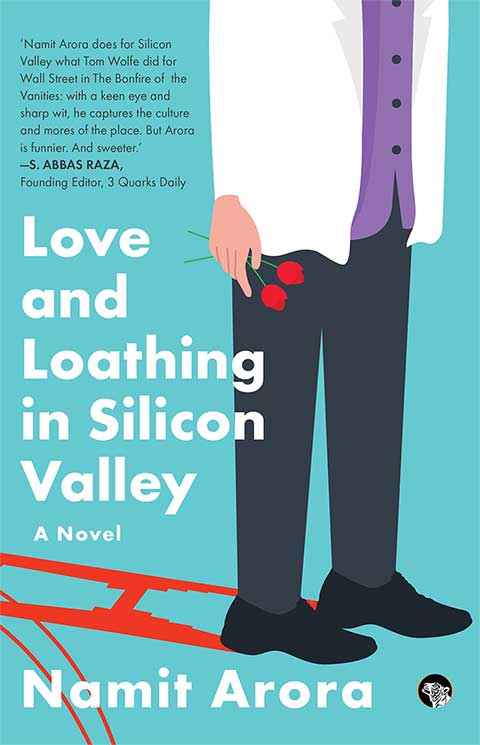| Index of articles from the Blog |
| Animals |
| Anthropology & Archaeology |
| Art & Cinema |
| Biography |
| Books & Authors |
| Culture |
| Economics |
| Environment |
| Fiction & Poetry |
| History |
| Humor |
| Justice |
| Philosophy |
| Photography |
| Politics |
| Religion |
| Science |
| Travel |
Books by
Books by
|
By Usha Alexander | Jan 2009 | Comments
There has been a certain amount of criticism from Indian audiences clamoring (predictably) that the film Slumdog Millionaire fails in the way of all popular Western media, depicting only India's filth and poverty. But I don't see this as it's failing. After all, filth and poverty are undeniably part of the reality of India, and there's nothing wrong with situating a story there, as Mira Nair creditably did in her breakout film Salaam Bombay! In fact, the lives of the destitute, as any who live in extreme conditions or on the frayed edges of bare survival, provide fertile fields for real drama and deep inquisitions into the human condition, and there's no reason why they shouldn't be reaped as such, in much the same way as we regularly do stories situated in Europe during WWII and the Holocaust or the Antebellum South. But even with the richest ingredients to select from, the storyteller can choose to whip up something fine and substantial, or to make cotton candy: sweet, light, and fun in the moment, but empty and ultimately unsatisfying (plus, eating it hastens tooth rot). And that's what Danny Boyle has done with this well-intended, hackneyed, feel-good flick. Now I've been known to enjoy my cotton candy as well as anyone—even to crave it on occasion—but what baffles me are the critical accolades this film is receiving from every corner. After winning four Golden Globes and literally dozens of of film festival and other international film awards and nominations, it's now considered by some to be the front runner for the Oscars. Slumdog has its moments, to be sure. Like almost any Bollywood flick, this one too lurches between moments of pathos and bathos, flashes of insight and ingenuity engulfed the next instant by kitsch. But equally like most Bollywood flicks, the problems with Slumdog come down to dishonest storytelling: Veering away from human complexity and difficult truths to replace them with kitsch or stereotype; resorting to gratuitous displays of unwarranted emotion, violence, chase scenes, plot twists, and whatnot to tease, pull, or otherwise manipulate a response from the audience. Characters are uni-dimensional, with true blue heroes who are incorrigibly good, and bad guys who are horrifically bad. Moral "dilemmas" are conveniently black and white, so heroes and villains never need suffer a crisis of conscience—except, of course, when that villain is the hero's darker brother, in which case he is allowed a final change of heart, just before he dies, preferably in a hail of bullets. "Heroines" are absolute non-entities with a single character and role, which is to remain dolled up and precious, and finally to serve as the hero's grand prize at the end. With two hours to hold onto us, Slumdog Millionaire managed to pack in every one of these devices. And on top of that, it suffered from bad acting, notably on the part of lead actor Dev Patel. Poor Patel was plainly not up to this role. I was even willing to accept that these uneducated slumdwellers spoke passable English, if only for the purpose of making an English-language film. But Patel's British accent and body language never for a moment allowed me to believe that he was acquainted with the life of the slums. He didn't even try. But, it gets worse....
And what about the scenes in which our hero gets chased first by cops and then by murderous Hindu mobs, yet in which no one is humanized, no sense, context, or motive is ever offered? Or the scene in which young Jamal literally dives into a pool of shit out of devotion to his film star hero, Amitabh Bachchan, running up to get his autograph while literally dripping with shit? Even in the loss of Jamal's mother, the violence, chaos, and need in the lives of the slumdwellers is depicted generically. While these events are in themselves not incredible (except getting Bachchan's autograph), they are strung together here without integrity, only to effect a whirlwind of sensational drama without scope or purpose except to whip up our fear, disgust, sympathy without enriching our understanding or deepening the characters. Salim, the darker (and therefore, of course, darker skinned) brother who goes bad is also a stock character. Although his degeneracy is adroitly projected by both the middle and older actors of his part, the question never arises why? Why does he suddenly pull out a gun one day? Where did he get it? (India is not the USA: guns are not so easy to come by.) And more mysteriously, why does he later change his mind about who he is, one fine day? His exit scene, in which he buries himself in a bathtub full of money and awaits his death in a final blaze of machismo is taken straight from the annals of film kitsch. Not a bit of it made sense. All these characters are used as props, rather than being projections of humanity allowed to inhabit their own stories. It doesn't matter, though. Ours is not to wonder why, is it? Ours is merely to be lifted into the world of wishful thinking, where the good guy always gets the pretty gal (and the riches) and we get to see the bad guys die. No matter how improbable, no matter how untrue to life. The only thing to do is to dumbly accept the filmmakers' conceit that "it is written." What does work to great effect in Slumdog is its texture: the graininess of the film's finish, the quick-cut editing, the evocation of scale, as in the aerial views of the slums, the countryside from the top of a train, the teeming humanity of Bombay, which give the film a kind of hideous beauty. The most powerful images in the film are of the slums and the cities, their labyrinthine corridors and weathered facades. It's in the way the visual is used, sliced, and textured that the film almost transcends its pedestrian story and exposes an earthiness, a vital reality behind the flaccid distractions of its characters. Unfortunately, this isn't enough to make up for its flaws. But it looks like Slumdog may be a trendsetter of sorts. Now everyone wants in on that Bollywood magic, from Johnny Depp to Will Smith. Who knew that all mainstream Bollywood needs to do to cash in big box office returns and critical praise in the US is to make their films in English and take out the dance numbers? Hardly surprising that kitsch would have universal appeal. |
Designed in collaboration with Vitalect, Inc. All rights reserved. |
|








